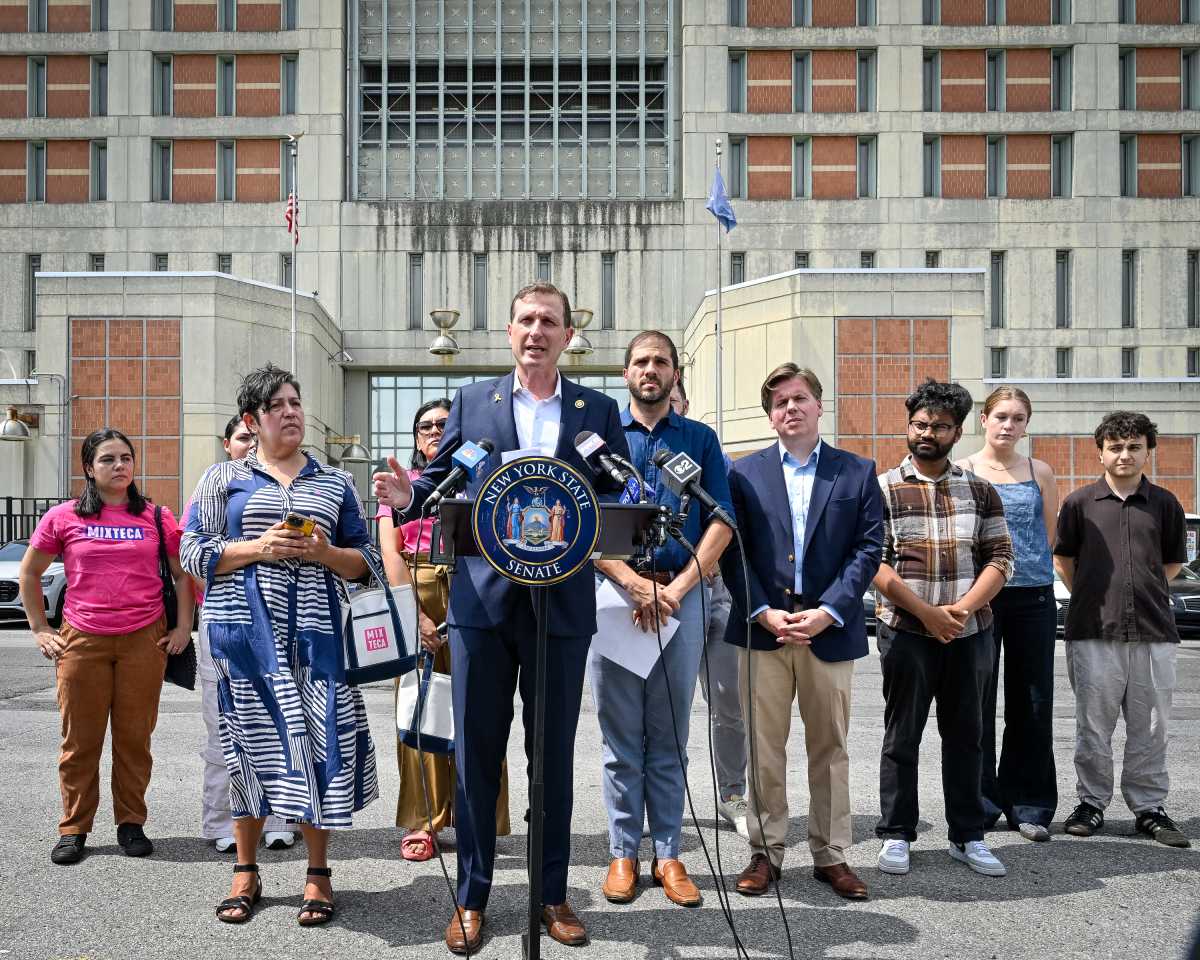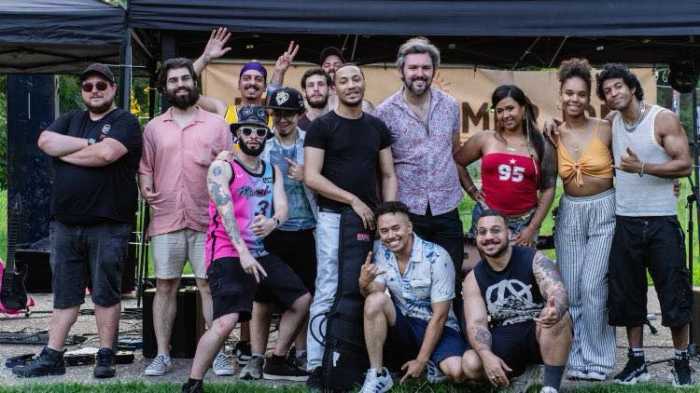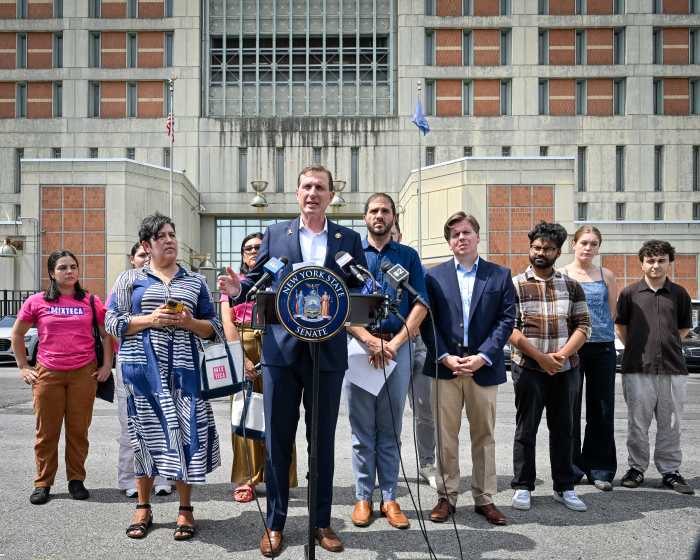
Under current zoning, a 300-foot-tall building could be built on the site of Vanderbilt Hall, on Washington Square South, between MacDougal and Sullivan Sts.
First published Fri., May 3; Updated Wed., May 8:
BY LINCOLN ANDERSON | Andrew Berman told The Villager late last Friday afternoon May 3 that three important sites — including two owned by N.Y.U. on the edge of Washington Square Park — that had previously been left out of the proposed South Village Historic District “Phase II” have now been included in it by the Landmarks Preservation Commission.
Berman, executive director of the Greenwich Village Society for Historic Preservation, said he received word earlier on Friday from both L.P.C. and Council Speaker Christine Quinn’s Office that the three sites are now in the proposed district.
The sites most notably include N.Y.U. Law School’s Vanderbilt Hall. A low-scale, Italianate-style building, it occupies the block bounded by Washington Square South, MacDougal St., W. Third St. and Sullivan St.
The second site, on a much smaller footprint, just to the east of Vanderbilt, is N.Y.U.’s Kevorkian Center, which sits at the corner of Washington Square South and Sullivan St.
Also, the blockfront of low-rise buildings on the north side of Houston between MacDougal and Sullivan Sts. had been previously left out of the proposed historic district, but is now included in it.

“This is tremendous news. All three of these sites will be in [the proposed district],” the preservationist told The Villager. “They’re all historically significant and belong in the district. But if they hadn’t been included, very inappropriate development could take place on these sites without landmarking. In the case of Vanderbilt, in particular, that could have been [developed as] a 300-foot-tall tower.
“It’s extremely rare to get N.Y.U. buildings landmarked — particularly when they were already excluded for a proposed district,” Berman noted.
In addition, Berman said he and G.V.S.H.P. were “especially thrilled” that the 170-year-old buildings on the Houston block are now in the proposed district. These small structures are historically significant in their own right, he said, but also significant because they abut the landmarked MacDougal-Sullivan Gardens Historic District, just north of them.
“It will help protect MacDougal-Sullivan Gardens from development that would overshadow and shatter the scale of those charming houses,” he said.
As for the Kevorkian Center, which is adjacent to the Judson Church Hall, Berman added, its famed architect, Philip Johnson, “very correctly lined the building up with the roofline of Judson Hall.” A larger development on the site would ruin that contextual scale, he said.
However, while L.P.C. has pledged to vote on whether to designate the district, that won’t happen until December, which is a long way off. Until a designation hearing is officially calendared, all the properties in the proposed district still face the risk of development. Plus, it’s always possible that parcels could be removed from the proposed district before the vote.
“I want to strike a note of caution,” Berman said. “The district has not been voted upon yet. We pushed so hard [to include these three sites] because the boundaries, once set, can’t be expanded. They can be shrunk — and it does sometimes happen.” Yet, he added, “We feel confident that the case is 100 percent solid that these sites belong in the district.”
In addition to working to ensure that the proposed district’s boundaries now aren’t shrunk, Berman said G.V.S.H.P. and its allies will keep up their effort to landmark “Phase III” of the proposed South Village Historic District — south of Houston St.
It’s hard to underestimate the significance of putting a check on N.Y.U.’s potential ability to develop new, taller and bulkier buildings on the edge of Washington Square Park. With Vanderbilt and Kevorkian not having been included in the proposed South Village Historic District, there was no telling what could have been constructed on these sites in the future. Out-of-scale, overshadowing development could always have been a possibility, especially on the Vanderbilt site.
“They had a free hand,” Berman said of N.Y.U., “and I would say, their free hand has now been limited.”
Speaking late last Friday afternoon, a Landmarks spokesperson said, if the three sites had been included in the district, that a letter would have been sent to Berman and Quinn stating so. But since it was after business hours and she was out of the office, she said, it would be hard to track down the letter for confirmation.
However, the spokesperson, Lisi de Bourbon, e-mailed The Villager back a bit later on Friday, stating, “The information you have about the three buildings [sic] is not correct. The question of whether to include them remains under review. No final determination has been made.”
Told of de Bourbon’s statement, Berman said he was, in fact, told verbally that the sites have been included, and has had numerous conversations with the Council speaker’s office about the matter.
“I haven’t seen that yet,” he said of the letter, “but I have been told that it’s the case.”
He then forwarded to The Villager a letter that Quinn had e-mailed out to thousands of Village-area constituents at 5:20 p.m. Friday, confirming the news on the three sites.
Quinn’s e-mail stated, in part, “I am writing with excellent news regarding the South Village Historic District… . I am pleased to inform you that L.P.C. has agreed to include all three locations [Vanderbilt, Kevorkian and the Houston St. blockfront] in the proposed boundaries. This means that the proposed district, when calendared, will include these locations. This significant commitment will help ensure that the character of the South Village, and the history of the late 19th- and early 20th-century immigrants who populated it, is preserved. I am grateful to L.P.C. and, specifically, Chairperson Robert Tierney, and I look forward to working with you and L.P.C. in our continued effort to protect and preserve our city’s architectural and historical heritage.”
N.Y.U. was not as effusive about the news as Berman and Quinn.
“We’re not going to comment on the landmarking process,” a university spokesperson said.
As for why there was any confusion on the trio of sites being added, speculation is that Quinn and L.P.C. might have had some miscommunication on when to make the announcement.
Things were finally clarified on Wednesday, when Berman received the official confirmation letter, dated Mon., May 6, from Robert Tierney, the Landmarks chairperson.
“After a careful evaluation,” Tierney wrote, “the commission staff has concluded that the New York University Vanderbilt Law School, at 40 Washington Square South, and the New York University Kevorkian Center appear to meet the criteria for designation and will be recommended to the full commission for inclusion within the proposed South Village Study Area. The Vanderbilt Law School Building is a contextual design that contributes to the sense of place along the southwest corner of Washington Square South — the western edge of which is within the boundaries of the Greenwich Village Historic District. The Kevorkian Center is a critically well-received modern building designed by a celebrated architect.
“In addition,” Tierney continued, “the commission plans to bring forward for calendaring the 10 buildings on Houston St. between MacDougal and Sullivan Sts. Although initial research suggests that due to extensive changes over time, the entire row is too altered to merit consideration, the commission plans to include this block in the boundaries to be calendared to allow for a robust public review process.”
With the question of whether to add the three sites no longer under review, on Wednesday, spokesperson de Bourbon told The Villager, “The vote to calendar — or schedule a public hearing on — the proposed South Village Historic District, including the two N.Y.U. buildings and the 10 Houston St. buildings will be on May 21. The public hearing will be held on Tues., June 25.”

































